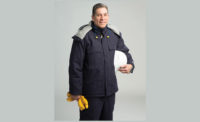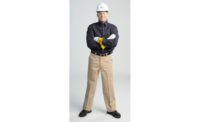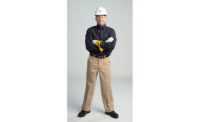Combustible dust is present in a variety of industries and is the precursor to a serious hazard. This hazard’s often-destructive nature makes it vitally important to understand. When accounting for the hazard, several questions arise, highlighting the true complexities of combustible dust.
By definition, combustible dust consists of fine particles that can fuel explosions, deflagrations and flash fires. The multi-hazard risk is further compounded by a lack of comprehensive knowledge surrounding combustible dust. It is difficult to account for the hazard with a lack of a formal rule, making compliance much lower than the severity of resulting incidents would warrant.
Here we address five frequently asked questions about combustible dust and how to mitigate the hazard:
What is the difference between a combustible dust explosion, a deflagration and a flash fire?
While all three occurrences pose serious risks to workers, the key difference is pressure.
- An explosion needs five components to occur: oxygen; fuel, which is dust; a thermal source; a dispersion of fuel (in this case, dust); and confinement. The four components plus confinement lead to a pressure buildup that causes an explosion.
- A deflagration has some pressure buildup as it spreads through a facility. Usually, deflagration is the result of an explosion, which agitates and disperses dust elsewhere in a facility that ignites and burns with some residual pressure.
- A flash fire does not produce damaging pressure. Per NFPA 2112, a flash fire is a type of short-term duration fire with a rapid flame front spreading through diffused fuel, such as dust, without the production of damaging pressure.
What regulations and standards are important to review when accounting for combustible dust hazards?
To understand, and subsequently account for, a combustible dust hazard, begin with OSHA 1910.132, the regulation addressing PPE selection. This rule outlines the “what” of a combustible dust hazard, defining the risk assessment process and personal protective equipment (PPE) needs surrounding various tasks.
Once you identify the hazard, NFPA 2113: Standard on Selection, Care, Use, and Maintenance of FR Garments for Protection of Industrial Personnel Against Short Term Thermal Exposures from Fire and NFPA 652 are the consensus standards defining “how” to comply with OSHA’s directive. NFPA 652: Standard on the Fundamentals of Combustible Dust provides general requirements for mitigating fire and explosion hazards of combustible dust — including language around the use of flame resistant (FR) clothing. NFPA 652 references NFPA 2113 as an option for a workplace hazard analysis, which determines FR clothing and PPE needs to protect against a short-duration thermal exposure.
We already implement housekeeping and engineering controls to reduce and eliminate combustible dust hazards. Why are FR clothing and PPE needed?
In this instance, as in all risk assessments, it is important to consider the hierarchy of risk controls. The hierarchy of risk controls works together to effectively reduce the likelihood of an incident occurring and the severity of injury if an incident does occur. It is important to utilize the hierarchy comprehensively to achieve maximum protection. The Dust Hazard Analysis (DHA) helps provide action items to mitigate the impending risks of combustible dust.
While FR clothing and PPE will not protect against the substantial and concussive force of an explosion, they can help protect against any potential or resulting lower-pressure deflagrations and certainly will provide protection against flash fire. FR PPE can address the risk gap to lessen the potential for injury or loss of life presented by propagating flames.
When analyzing our dust hazard, our facility falls into the KST1 category. This type of dust is considered a “weak explosive dust.” Do we need FR clothing?
“Weak explosive dust” is a classification, not a defining term. Weak explosive dust still has the potential to cause serious harm to both workers and facilities. In fact, some of the more high-profile combustible dust incidents that have occurred resulted from combustible dusts with KST1 values.
Considering KST1 value dust incidents along with higher KST value dust incidents, an interesting picture is painted. Between 1980 and 2005, the U.S. Chemical Safety Board identified 281 combustible dust incidents, causing 119 fatalities and 718 injuries. Of those 718 injuries, which outpace fatalities at a 7:1 ratio, a majority of the injuries resulted from burns. These numbers suggest that FR clothing and PPE could have helped to mitigate injuries, and perhaps even fatalities, in these catastrophic combustible dust incidents.
Our hazard assessment indicated the need to explore our maintenance personnel’s PPE. They are removing dust, which is the risk. Why would they need to wear PPE in the process?
Housekeeping and maintenance play a major role in reducing and eliminating combustible dust; however, their process, blowing or sweeping up dust, can generate dust clouds, which could serve as the fuel necessary for an incident. If the other components are present — oxygen and a thermal source, which could be as simple as a spark from nearby welding or electrical equipment — then the conditions are ripe for a dust-fueled flash fire. FR clothing can serve as an important final layer of defense in the hierarchy of risk controls.



